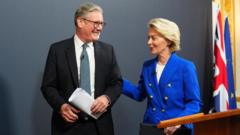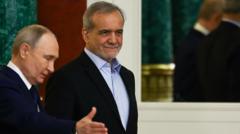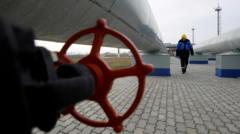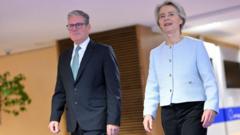The ongoing investigation into muons raises questions about their role in the universe, suggesting possibilities beyond current understanding.
Muon Mysteries Persist: New Discoveries Leave Physicists Pondering

Muon Mysteries Persist: New Discoveries Leave Physicists Pondering
Recent findings on the behavior of muons may hint at new physics, but uncertainty remains.
It has been a long journey for physicists involved in studying muons. Over a decade ago, a team meticulously transported a large magnetic ring from the East Coast to Batavia, Illinois, home to the Fermi National Accelerator Laboratory (Fermilab). On June 3, 2025, this group revealed their most current findings regarding the erratic motion of muons, a type of subatomic particle. Their results, published in the illustrious journal Physical Review Letters, might provide insights into undiscovered concepts of energy and matter.
"The goal remains to comprehend the fundamental structure of the universe: its origin, composition, and interactions," remarked Peter Winter, a physicist at Argonne National Laboratory and spokesperson for the Muon g-2 Collaboration. He emphasized that this result would be a key reference point for years ahead. However, the research is not free of complications. Scientists are faced with two conflicting predictions regarding the muon wobble, and while their latest measurements align with one, clarity remains elusive until the other can be adequately addressed.
“The success of the Fermilab experiment is commendable, they succeeded in their mission,” commented Aida El-Khadra, a physicist at the University of Illinois Urbana-Champaign and leader of the Muon g-2 Theory Initiative. “Yet, we as theorists still have much to investigate.” Until a consensus emerges, Dr. El-Khadra noted, “the situation remains ambiguous.”
Muons are heavier, unstable cousins of electrons. When subjected to a magnetic field, these particles exhibit a precession, or wobbling motion, akin to a spinning top. This wobbling is intimately tied to their internal magnetic properties, quantified by a parameter known as "g." The precise measurement of g has the potential to unravel deeper mysteries about the nature of our universe.
"The goal remains to comprehend the fundamental structure of the universe: its origin, composition, and interactions," remarked Peter Winter, a physicist at Argonne National Laboratory and spokesperson for the Muon g-2 Collaboration. He emphasized that this result would be a key reference point for years ahead. However, the research is not free of complications. Scientists are faced with two conflicting predictions regarding the muon wobble, and while their latest measurements align with one, clarity remains elusive until the other can be adequately addressed.
“The success of the Fermilab experiment is commendable, they succeeded in their mission,” commented Aida El-Khadra, a physicist at the University of Illinois Urbana-Champaign and leader of the Muon g-2 Theory Initiative. “Yet, we as theorists still have much to investigate.” Until a consensus emerges, Dr. El-Khadra noted, “the situation remains ambiguous.”
Muons are heavier, unstable cousins of electrons. When subjected to a magnetic field, these particles exhibit a precession, or wobbling motion, akin to a spinning top. This wobbling is intimately tied to their internal magnetic properties, quantified by a parameter known as "g." The precise measurement of g has the potential to unravel deeper mysteries about the nature of our universe.



















